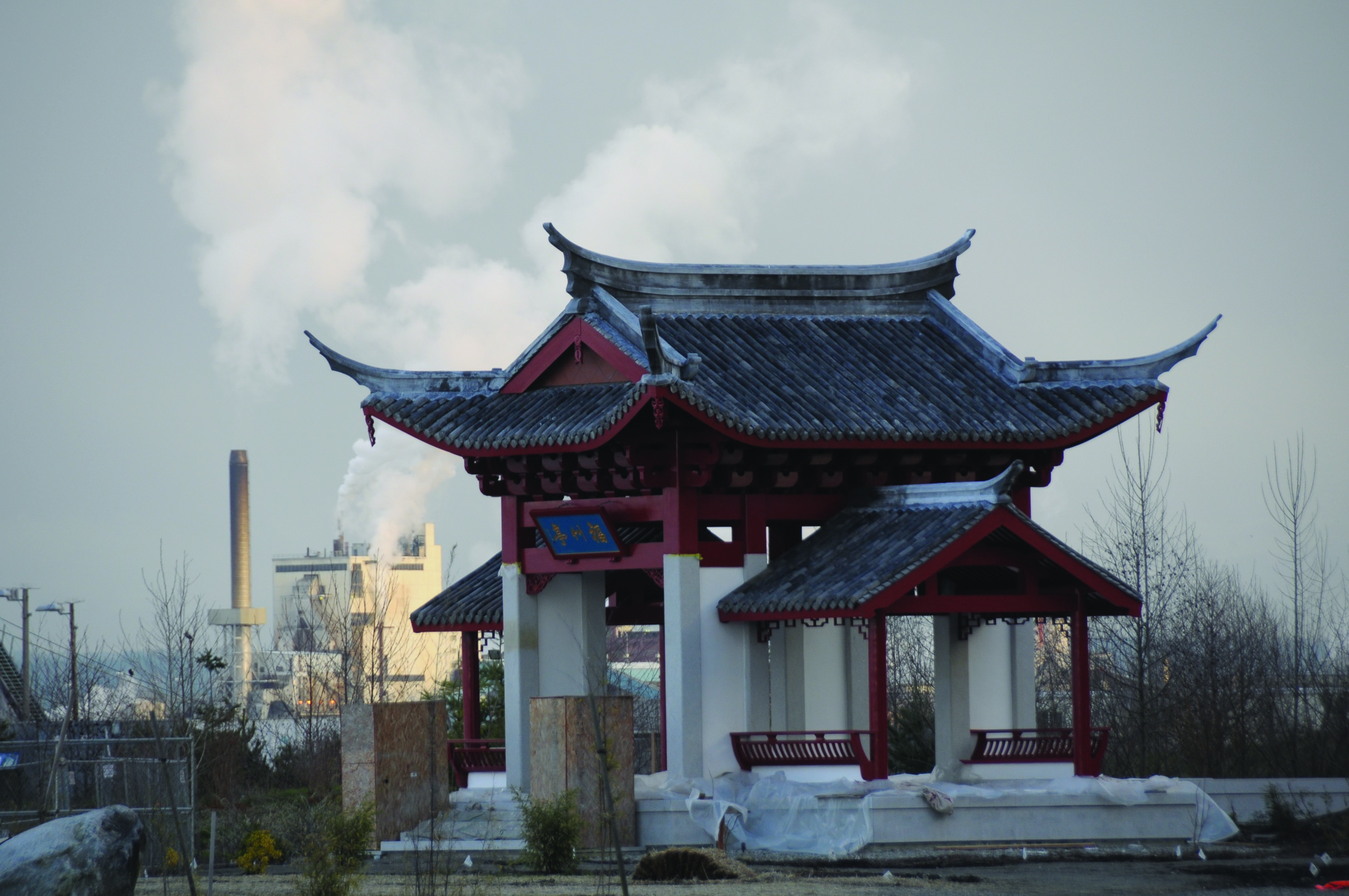
It all began with the Chinese character for harmony, “hé.” Almost 20 years ago, the board for the non-profit organization the Chinese Reconciliation Park Foundation had their first meeting to discuss why it was important to found a park in Tacoma that reflected this simple, beautiful word.
Board members Lotus Perry, a Chinese language professor here at Puget Sound; Lihuang Wung, the project manager; Bill Evans and Larry and Theresa Pan Hosley, are some of the dedicated individuals who have been involved with the project since its humble beginnings in 1992.
In recognition of Tacoma’s ethnically and religiously varied population, the board found it important that the park should stand as an icon for diversity, a park made to inform and inspire.
Not only the board was in favor of this idea, but the city council of Tacoma voted unanimously in support of the Chinese Reconciliation Park. Theresa Pan Hosley, a respected Tacoma resident and highly influential member of the board, hoped that this message was put across with the introduction of the new park: “Everyone is welcome in Tacoma.”
For those who haven’t noticed it, perhaps on the way to Seattle or elsewhere, a bright red Chinese pagoda, or “ting,” has been erected on Commencement Bay’s waterfront–the central attraction of the gorgeous four-acre park. The 30 by 40-foot pavilion was actually a gift from Tacoma’s sister city in China, Fuzhou. It was comprised of a total of 7,300 pieces that were sent along with three skilled Chinese craftsmen, as well as an interpreter, to help with the assembly.
Additionally, with its beautiful gardens, intricately carved stones, weaving gravel pathways and a pearly white bridge, the new park is sure to be a popular visiting spot for Tacoma’s residents before and after its projected completion in May.
Now that the park’s fences are down, people are free to stroll throughout Tacoma’s new testament to religious and ethnic harmony.
However, such sentiment has not always been a part of Tacoma’s history. On Nov. 3, 1885, roughly 200 of Tacoma’s remaining Chinese residents were forcibly expelled from the city—many Chinese families even had their houses burned.
Although Chinese-American tensions were high at the time (i.e., the Chinese Exclusion Act of 1882), it remains a historically shameful act that Tacoma has been forced to deal with as a community.
The park, although beautifully moving, does not excuse the past. It does send a powerful message, however, to which the Chinese are quickly responding.
Within the past 18 months, $782,000 worth of trade has taken place between Fuzhou and Tacoma. Not only that, but a major Chinese investor is in the process of meeting with Tacoma’s mayor, Marilyn Strickland, right now—a change that could ultimately affect the overall prosperity of the Tacoma community.
In the past, China’s focus has mostly overlooked Tacoma, preferring trade with Seattle instead. Now it seems that the floodgates to relations with the people of Fuzhou have been thrown wide open.
Young people are beginning to express their interest in helping out at the park, including local high school students as well as students from Pacific Lutheran University and Puget Sound. Moreover, they’ve expressed interest in eventually exchanging letters, visits and other forms of communication with the people of Fuzhou.
Powerfully enacting the harmonious sentiment of the Chinese Reconciliation Park, roughly 300 people walked from the old train station down to the park as part of the Walk for Reconciliation, on Oct. 30, 2010—the 125th anniversary of Tacoma’s evacuation of the Chinese. By this time, a decent amount of progress had been made in the park.
However, the symbolic walk was what really caught the attention of the press, and even Seattle is now in the process of creating a project to commemorate its own indecent acts towards the Chinese and other targeted groups of the past.
For more information about the park, visit tacomachinesepark.org. But if you’re eager to experience the park first-hand, simply walk down the hill on 31st St. down to the waterfront until you reach 1741 N. Schuster Pkwy. Although the park isn’t finished yet, the feeling of reconciliation is already present, the sense of “hé,” intact.
[PHOTO COURTESY / DANIEL PENDLETON]
